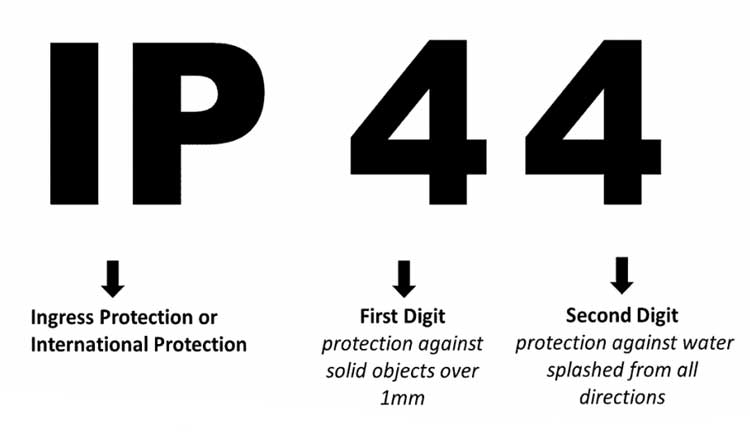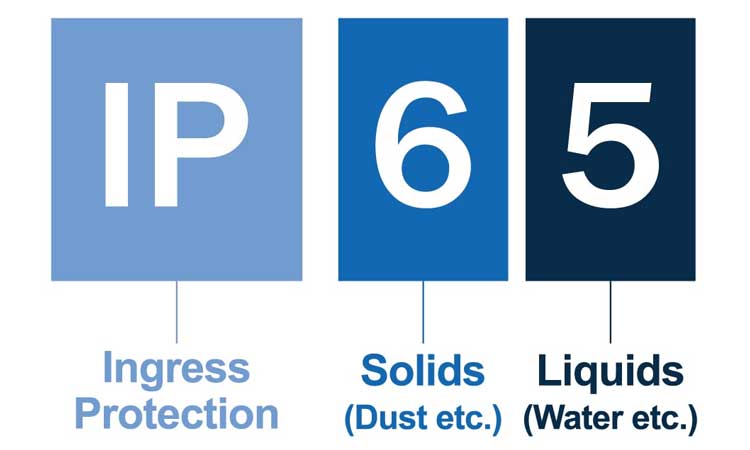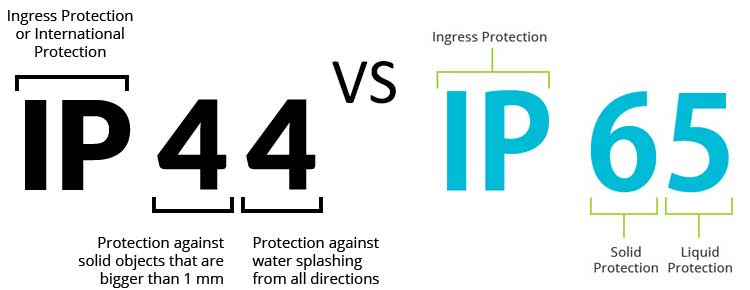Have you ever wondered about the meaning of “IP” ratings such as IP44, IP65 or IP67 mentioned in LED displays? Or have you seen the description of IP waterproof rating in the advertisement? In this article, I will provide you with a detailed analysis of the mystery of IP protection level, and provide comprehensive information.
Ip65 Vs. Ip44: Which Protection Class Should I Choose?
In IP44, the first number “4” means that the device is protected against solid objects larger than 1mm in diameter, while the second number “4” means that the device is protected against liquids splashed in from any direction.

As for IP65, the first number “6” means that the device is completely protected against solid objects, while the second number “5” means that it is resistant to water jets.

Ip44 Vs Ip65: Which Is Better?
From the above explanations, it is clear that IP65 is significantly more protective than IP44, but the production costs increase accordingly to achieve a higher level of protection, so products labeled IP65, even if they are the same model, are usually much more expensive than the IP44 version.

If you are using the monitor in an indoor environment and do not require particularly high protection against water and dust, then the IP44 protection level is more than sufficient. This level of protection can meet the needs of a wide range of indoor situations without the need to spend extra on a higher rating (e.g. IP65). The money saved can be used for other investments.
Does A Higher Ip Rating Mean More Protection?
It is often misunderstood:
For example, IP68 does provide more protection than IP65.
This misconception leads to the common belief that the higher the IP rating, the higher the price of the product. But is this really the case?
In fact, this belief is wrong. Although IP68 may appear to be a couple of ratings higher than IP65, IP ratings above “6” are set individually. This means that IP68 is not necessarily more waterproof than IP67, nor is it necessarily more protective than IP65.
Which Protection Class Should I Choose?
With the above information, have you been able to make a choice? If you are still confused, here is a summary:
1.For indoor environments, you can save some money by choosing a product with a lower protection class, such as IP43 or IP44.
2.For outdoor use, you should choose the right protection level according to the specific environment. Generally speaking, IP65 is sufficient in most outdoor scenarios, but if the device needs to be used underwater, such as underwater photography, it is recommended to choose a product with IP68.
3.Protection classes “6” and above are defined independently. If a comparable IP65 product costs less than an IP67, you may consider the lower cost IP65 option.
4.Do not rely too heavily on the protection ratings provided by manufacturers. These ratings are industry standards, not mandatory, and some irresponsible manufacturers may arbitrarily label their products with protection ratings.
5.Products tested to IP65, IP66, IP67 or IP68 must be labeled with two ratings if they pass two tests, or all three ratings if they pass three tests.
We hope that this detailed guide will help you feel more confident in your knowledge of IP protection ratings.
Post time: Aug-01-2024







